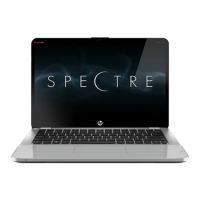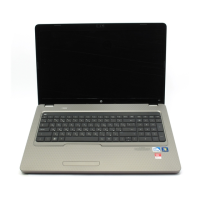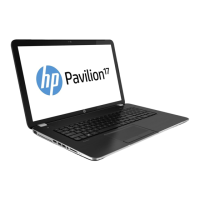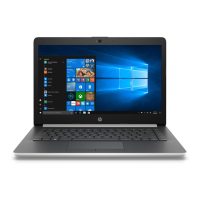Power
Hardware and Software Guide 3–19
Identifying Low-Battery Conditions
This section explains how to identify low and critical battery
conditions.
Low-Battery Condition
When a battery pack that is the sole power source for the
notebook reaches a low-battery condition (5 percent of a full
charge), the battery light blinks.
Critical Low-Battery Condition
If a low-battery condition is not resolved, the notebook enters a
critical low-battery condition (3 percent of a full charge).
In a critical low-battery condition:
■ If Hibernation is enabled and the notebook is on or in
Standby, the notebook initiates Hibernation.
■ If Hibernation is disabled and the notebook is on or in
Standby, the notebook remains briefly in Standby, and then
shuts down and loses your unsaved work.
To verify that Hibernation is enabled:
1. Select Start > Control Panel > Performance and
Maintenance
> Power Options > Hibernate tab.
2. Be sure that the Enable Hibernate Support check box
is
selected.
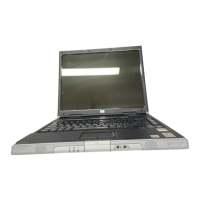
